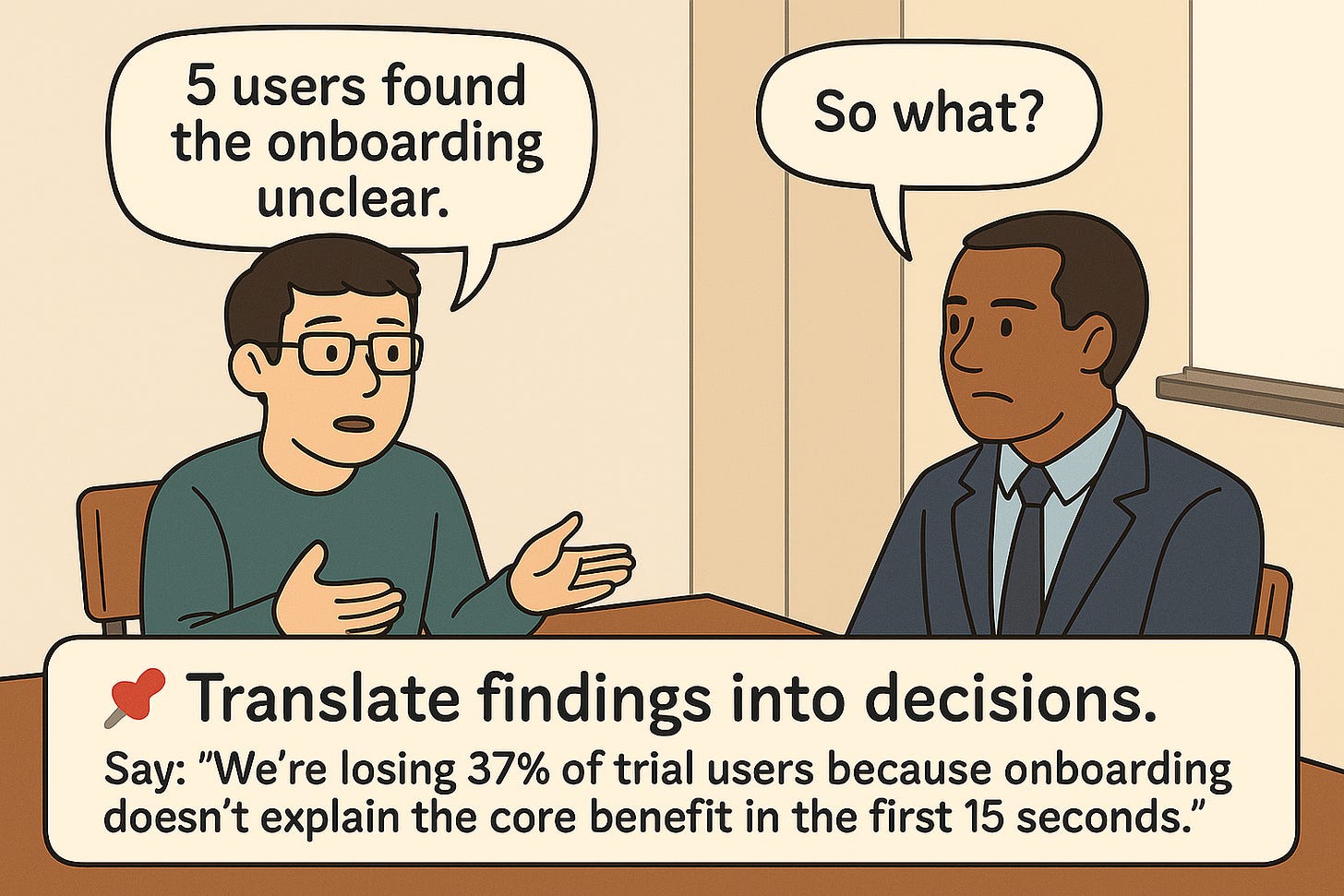The 5 UX Mistakes You Don’t Know You’re Making
(And how to fix them before they stall your career or sabotage your product)
You’re smart.
You care about the user.
You follow the process.
So why does your work sometimes get questioned or worse, ignored?
In this issue, we’re unpacking five UX mistakes that even seasoned professionals make.
Not because they’re careless, but because the field has changed and what used to be “best practice” is now just... expected.
These blind spots don’t show up in portfolios.
But they show up in impact, in stakeholder trust, in how your work is received.
Let’s shine a light on what might be holding you back quietly.
Mistake 1: You’re Prioritizing Flow Over Friction
Mistake 2: You Talk Research, But Not Results
Mistake 3: You Treat Handoffs Like the Finish Line
UXCON25 Spotlight: Building Better UX Habits
Mistake 4: You Design for the Ideal, Not the Real
Mistake 5: You Assume Leadership Will Just “Get It”
Resource Corner
Here’s are 5 common UX mistakes that even experienced pros often overlook.
Mistake 1: You’re Prioritizing Flow Over Friction
You’re designing a seamless experience. Everything clicks. The journey is smooth.
But here’s the problem: not all friction is bad.
Friction can prevent errors.
Friction can help users slow down and make better decisions.
Friction is often the difference between a user experience and a user mistake.
📌 Fix it: Use intentional friction where it adds value.
Instead of obsessing over fewer clicks, ask:
“What’s the right amount of effort for this decision?”
Example:
In a health app, confirming a prescription refill shouldn’t be one tap. It should feel intentional not rushed.
Mistake 2: You Talk Research, But Not Results
You ran the study. You found insights. You shared them.
But your stakeholder responds with: “So what?”
This mistake isn’t about your method it’s about your messaging.
📌 Fix it: Translate findings into decisions.
→ Don’t say: “5 users found the onboarding unclear.”
→ Say: “We’re losing 37% of trial users because onboarding doesn’t explain the core benefit in the first 15 seconds.” (one way to accomplish this is look for quantitative data generated by the product you are testing, that can validate your insights)
Good research tells a story. Great research earns a seat at the strategy table.
Mistake 3: You Treat Handoffs Like the Finish Line
You wrap up the designs, upload the Figma file, leave comments, and move on.
That’s the handoff, right?
Wrong.
The design isn’t done when it’s delivered. It’s done when it’s implemented well — and you need to be part of that.
📌 Fix it: Stay involved. Sit in on QA. Pair with dev. Test it with a small pool of users. Advocate for design details.
Designers who vanish after handoff don’t build trust. Designers who stick around make sure their work survives the last mile.
🎤 UXCON25 Spotlight: Building Better UX Habits
At UXCON25, we’re not just talking about skills. We’re talking about what it takes to stay sharp.
You’ll learn:
How to build influence inside your org
How to avoid burnout while staying proactive
How senior designers keep improving their craft
What small habits actually lead to better design decisions
back to where we stopped..
Mistake 4: You Design for the Ideal, Not the Real
You imagine users who are focused, rational, fully engaged.
But most users are distracted, skeptical, or just trying to get through the day.
📌 Fix it:
Test with tired people.
Stress-test under real-world conditions.
Design for interruptions, not just completions.
Example: If your flow breaks down when someone gets a phone call or switches tabs, it’s not ready.
Real users are messy. Design for them anyway.
Mistake 5: You Assume Leadership Will Just “Get It”
You’ve done the work.
You showed your process.
You explained the UX value.
Still, your work isn’t getting traction.
Here’s why: You’re expecting understanding, when what you need is buy-in.
📌 Fix it: Speak the language of outcomes.
Instead of: “This design improves usability”
Say: “This will reduce churn by helping users complete onboarding faster, which supports our Q3 retention goal.”
Good UX is invisible. But good UX advocacy should never be.
📚 Resource Corner
Final Thought: Awareness Is the First Step Toward Influence
None of these mistakes mean you’re bad at UX.
They mean you’re growing and growth comes with blind spots.
But the best designers don’t just fix flows. They fix themselves.
They question habits. They zoom out. They keep learning.
You don’t need perfection.
You need self-awareness, a clear lens, and the courage to change direction when needed.








Most researchers focus on tactics:
• Designing surveys
• Running focus groups
• Building trackers
• Analysing data
That’s just the execution layer.
Your value is in driving smarter decisions.
Great researchers aren’t just analysts.
They’re strategic partners.
A great post Yao!
Love this post